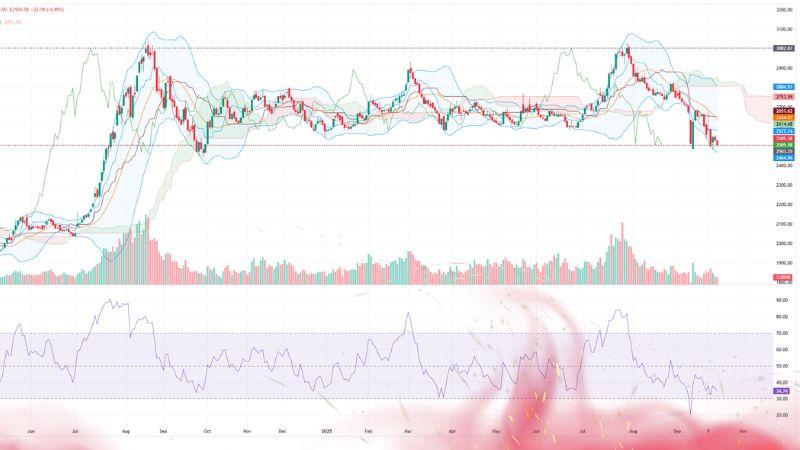By Dipesh Ghimire
NEPSE Slides Further as Investor Confidence Weakens — Despite SEBON’s Nine-Point Reform Package

Kathmandu — Nepal’s stock market continued its decline for the second consecutive day, underscoring growing investor unease and skepticism toward regulatory promises. The Nepal Stock Exchange (NEPSE) index fell by 22.58 points on Wednesday, closing at 2,505.58 points, extending Tuesday’s 19-point loss.
Trading volume also dropped, totaling Rs. 3.10 billion, compared to Rs. 3.36 billion the previous day. The steady fall in both the index and turnover clearly signals waning investor confidence, even as the regulator pledges major reforms.
Reform Promises Failing to Reignite Sentiment
The Securities Board of Nepal (SEBON) recently announced a nine-point reform package aimed at improving market transparency, efficiency, and investor protection. However, the announcement has failed to inject optimism into the market.
Investors and analysts alike say that the market has heard such promises before — what’s missing is visible implementation. Despite SEBON’s assurances, there’s little sign that reforms have started at the operational level, keeping traders cautious and reluctant to take fresh positions.
Details of SEBON’s Nine-Point Reform Plan
According to SEBON’s official plan, the regulator will immediately implement four of the nine reform points, while the rest are to be completed by mid-Mangsir (late November 2025). The key points are:
Margin Trading via Brokers:
SEBON plans to enable margin trading through licensed brokers within three months. This is expected to improve credit flow for investors but will require strict monitoring to avoid risk accumulation.ISIN Uniformity:
SEBON will enforce uniform standards for ISIN (International Securities Identification Number) codes issued by CDS and Clearing Ltd., reducing technical discrepancies and errors in settlements.Dividend Tax Settlement:
Companies distributing bonus shares will now be required to directly settle dividend taxes, reducing delays and confusion for retail investors.Payment Consistency Rules:
New guidelines will standardize how brokers and investors settle payments — ensuring that both sides fulfill obligations on time and that penalties apply for defaults.Multiple Beneficiary (DEMAT) Accounts:
Investors will soon be allowed to open and operate two or more beneficiary accounts, improving flexibility for portfolio management.Capital Market Literacy Programs:
SEBON will expand educational campaigns and training workshops to increase investor awareness and reduce misinformation in the market.Investigation Mechanism for Securities Offenses:
A specialized enforcement and investigation mechanism will be established to expedite inquiries into market manipulation, insider trading, and other malpractices.Review of IPO Rules:
The current rule requiring listed companies to issue a minimum of 10% of paid-up capital as IPO will be reviewed and revised, in line with market realities.SME Platform & Settlement Guarantee Fund:
SEBON aims to operationalize the SME trading platform, as well as develop a Settlement Guarantee Fund and Auction Market, providing liquidity support and reducing systemic risk.
While these reforms appear comprehensive on paper, investors doubt the regulator’s ability to deliver them within the announced timeframe. Many call for “results on the ground, not documents on the table.”
Market Overview: 12 Out of 13 Sub-Indices Down
Wednesday’s trading session saw broad weakness across all major sectors. Out of 13 sub-indices, 12 declined, with only mutual funds posting a slight increase.
Trading Sector: down 2.09%, the day’s worst performer.
Development Banks, Finance, Hydropower, Hotels & Tourism, and Others: all fell by more than 1%.
Top Gainers: Samata Domestic Microfinance surged 6.93%.
Top Losers: Samaj Laghubitta and Bindhyabasini Hydropower hit negative circuit limits.
Turnover and Active Stocks
By turnover, Nepal Reinsurance Company (NRIC) dominated the day, with Rs. 205.4 million worth of shares traded. The heavy volume indicates institutional participation, even as retail investors pulled back.
Other actively traded stocks included Global IME Bank (GBIME), Nabil Bank (NABIL), and Upper Tamakoshi Hydropower (UPPER) — though all closed lower, reflecting overall market sentiment.
Analysts: Market Confidence Tied to Real Implementation
Market analysts argue that SEBON’s reform package represents a necessary step but lacks immediate impact.
“Investors respond to action, not intentions,” said Sandeep Chaudhary, senior securities analyst and trainer.
“SEBON must prove its seriousness through visible implementation. Until then, confidence will remain fragile.”
Chaudhary adds that while policy direction is positive, execution discipline is key to restoring investor trust.
Technical Analysis: Market Still in Correction Phase
From a technical standpoint, NEPSE remains in a short-term correction zone.
Support Zone: Between 2,480–2,490 points, identified as a critical level.
If breached: The market could test deeper lows.
RSI (Relative Strength Index): Currently at 34.74, suggesting the market is oversold but still lacking strong reversal signals.
Analysts caution traders to wait for a clear reversal pattern or volume confirmation before re-entering the market.
Broker Analysis: Mixed Sentiment Among Top Firms
Trading data from top brokers show a split market — half buying aggressively, half exiting positions.
Top Sellers: Brokers 58, 45, 42, 48, and 62 were net sellers.
Top Buyers: Brokers 34, 55, 49, 28, and 44 made significant purchases.
Stock-specific highlights:
Global IME Bank (GBIME) saw 65% of its total buy volume, or 117,000 shares, bought through Broker No. 4.
SSH Laghubitta (SSHL) had 40% of total buys, or 40,000 shares, via Broker No. 32.
On the sell side, Broker No. 58 sold 92,000 GBIME shares, marking heavy institutional offloading.
Meanwhile, the NepseTrading AI Lite indicator flashed a yellow signal, interpreted as “Wait and Watch” — suggesting investors should stay cautious and avoid aggressive entries.
Nepal’s stock market has entered a critical phase where policy statements alone cannot drive recovery.
SEBON’s nine-point plan has the right framework, but its success depends on execution, enforcement, and consistency. Without tangible results — such as functioning SME trading, transparent IPO mechanisms, and an active Settlement Guarantee Fund — confidence will not return.
The NEPSE’s persistent decline underscores a deeper issue — a trust deficit between regulators and investors. The path to market stability lies not in more promises but in visible reform, strict regulation, and confidence-building measures.









